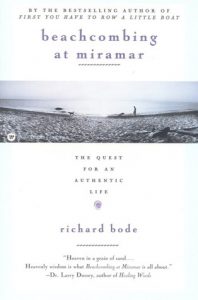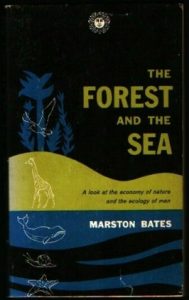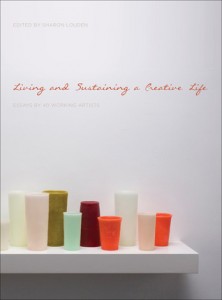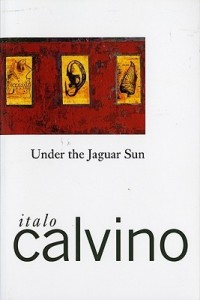I wanted to write this review in December, but I was busy stealing moments to make writing from the inspiration I found in Alchemy of the Word.
I wanted to write this review over the Christmas holiday, but I was practicing balance.
I wanted to write this review on New Year’s and fill it with links to all the posts I’ve previously written about inspiration, but I had just found out that my grandmother died.
So here I am beginning the new year as I mean to end it, practicing balance, experiencing the fullness of life, and giving myself a little grace for the fact that I am trying my best. (If you need to give yourself a little grace, let Icess guide you).
Practice, Practice, Practice
 I used the word “practice” very deliberately above, because I am not good at balance but it is a skill I’m trying to polish, just as writing is a skill that requires practice. The writers whose essays make up Alchemy of the Word are all very practiced writers and, as members of the faculty of Goddard College (my alma mater), are also tasked with helping new writers get into the habit (practice) of writing. The essays in this collection come from the speeches our teachers use to inspire us at residencies and to (lovingly) warn us about the writing life to come at commencements. They are about subjects as myriad as craft elements, literary activism, and failure. This last one is especially important (and frequent) because failure looms when you don’t practice. More so, failure plagues when you “fail” to see the success that is simply continuing to practice.
I used the word “practice” very deliberately above, because I am not good at balance but it is a skill I’m trying to polish, just as writing is a skill that requires practice. The writers whose essays make up Alchemy of the Word are all very practiced writers and, as members of the faculty of Goddard College (my alma mater), are also tasked with helping new writers get into the habit (practice) of writing. The essays in this collection come from the speeches our teachers use to inspire us at residencies and to (lovingly) warn us about the writing life to come at commencements. They are about subjects as myriad as craft elements, literary activism, and failure. This last one is especially important (and frequent) because failure looms when you don’t practice. More so, failure plagues when you “fail” to see the success that is simply continuing to practice.

As I read this book, I found myself looking for essays I might have originally heard delivered aloud but ultimately found that didn’t matter. The know-how of practicing is something I’ve already absorbed. Instead each of the essays in Alchemy of the Word served as a much-needed reminder to practice.
Balance is Tricky, Balance is Necessary
As a working writer/mom/wife, the breadth of life in these essays reminded me that writing is part of my balance, not something I can add on after. Deborah Brevoort contextualized the anti-intellectualism that’s plaguing our politics (and chinking away at my soul), Elena Georgiou encouraged me to search for my own personhood and to fill myself, Keenan Norris reminded me that I actually love the humility that comes with writing, and Micheline Aharonian Marcom exhorted me (again) to “Do [my] work.”
But to do my work (well), first I must fill up again. And I must develop a plan to keep myself filled during all the things that are to come. Here’s the advice from Alchemy of the Word that I’ll be carrying close to my heart as I navigate finding my balance:
“As a writer, I think of my body as a well that is mostly filled through reading.” – Elena Georgiou
“Remember to be absent, Writer. Be in the habit of being absent more often.” – Kyle Bass

Life Happens. And Then You Write about It
The sympathy that might have jumped into your heart when you read “my grandmother died” is not really earned. I hadn’t spoken to my grandmother since 2012 when she called on my birthday to yell at me for not inviting her to my wedding. I didn’t invite her to my (tiny) wedding because I didn’t like her. I didn’t like her because she’d never taken the time to get to know me. Are there things to mourn in my history with my grandmother, yes, but they are probably not what you expected at the outset.
“Inherent in the creative process is a perpetual tension between love and loathing that gives art its life.” – Aimee Liu
I wish that my grandmother’s tension between love and loathing of the female line she created had tipped more toward love, but the tension is something that gives life to my own work. In Alchemy of the Word, I was reminded to write deeply:
“You have to go to the scariest places, the absence, where nothing has been said so there is no protection at all.” – Rahna Reiko Rizzuto
“It is our duty as artists to enter into those places that are kept most secret in ourselves, and bring them to light not so much that we may be healed, but so that others might.” – Paul Selig
Today is the first time I’m explicitly writing about my relationship with my
grandmother, so I don’t pretend my thoughts are profound. I do hope that at the very least I can offer someone the comfort of solidarity in the complexities that are family relationships.
For myself, I’m taking solace in the birthday call I received from my other grandmother (my Baba) in 2011—a call I took on the beach at Port Townsend— the very same beach I so often walked while at Goddard. It was the last time I talked with Baba and I was sad that day in knowing that was probably true. But I am filled with joy at the thought that Baba saw me and loved me enough for two grandmothers.
How I Plan to Move Forward
This year I will write. I will try new things and fail. I will try new things and succeed. I will practice. I will read and take time to be absent. I will be kind to myself. Most of all I will play, because these two quotes resonated with me more than any of the others in Alchemy of the Word and helped me find the joy and purpose in this writing life:
“Being a writer is to be a student without end, and it is to be at play without end. The two are tied, study and play. Both commit us to risk and remediation, that is to learning, always to learning.” – Keenan Norris
“The artists I know have the capacity for wonder and surprise coursing through their veins. And they are all riotously free—whether they have, the way my mentor had, summers off or not.” – Michael Klein
I’m off to play now—to read, to soak in a tub, to watch my son create Playmobil orchestras, to joke around with my husband and to think. All of this is practice. All of it is life. And I am lucky.
To freedom.
To reinvigorate your writing practice pick up a copy of Alchemy of the Word from Bookshop.org. Your purchase keeps indie booksellers in business and I receive a commission.
 I read Beachcombing at Miramar: The Quest for an Authentic Life by Richard Bode just as I was changing jobs earlier this summer and somewhat terrified that I’d never write again. Things are better now, as of this weekend I have two books started and a jumble of poetry I vow to someday edit, so I feel like I can finally talk about this book and what it means to me.
I read Beachcombing at Miramar: The Quest for an Authentic Life by Richard Bode just as I was changing jobs earlier this summer and somewhat terrified that I’d never write again. Things are better now, as of this weekend I have two books started and a jumble of poetry I vow to someday edit, so I feel like I can finally talk about this book and what it means to me. I don’t usually read nonfiction. In fact, it’s the one genre I get snobby about (especially those self-help-type business books that regurgitate info rather than creating anything). I really do have strong feelings about those books. But the rest of nonfiction, for me, simply falls victim to my desire to lose myself in the dream worlds of poetry and fiction. So I have no idea what inspired me to pluck The Forest and the Sea by Marston Bates, but I’m glad I did because it opened me up to a whole world of ideas and helped me see the world from a variety of fresh perspectives.
I don’t usually read nonfiction. In fact, it’s the one genre I get snobby about (especially those self-help-type business books that regurgitate info rather than creating anything). I really do have strong feelings about those books. But the rest of nonfiction, for me, simply falls victim to my desire to lose myself in the dream worlds of poetry and fiction. So I have no idea what inspired me to pluck The Forest and the Sea by Marston Bates, but I’m glad I did because it opened me up to a whole world of ideas and helped me see the world from a variety of fresh perspectives.
